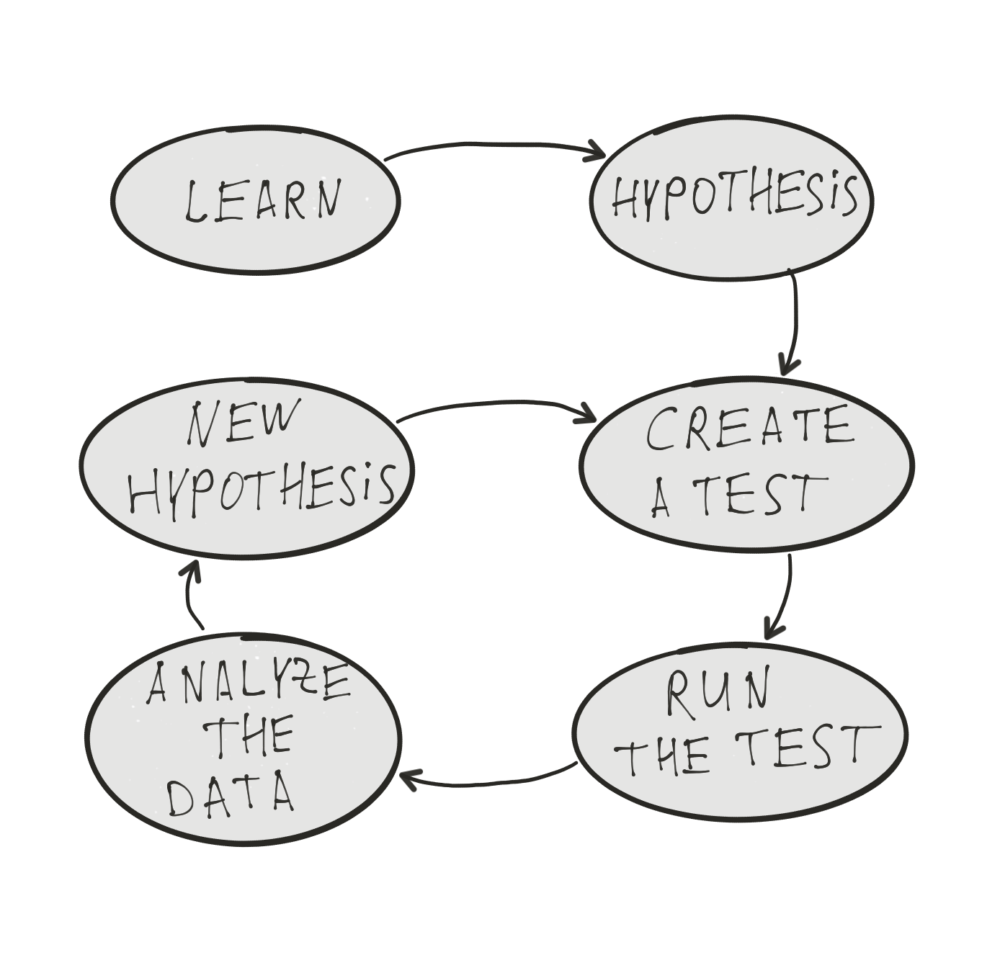It is just so simple to work through a hypothesis that no one actually does it. When you think about a new product you create hypotheses about the market, user needs and the product.
The quicker you make a reality check (of your hypotheses) the more chances to succeed you will have along the road. And the longer you are focusing on the easy things instead of the hard things, the farther you become from the product success.
Here is a simple and naive framework to work through your initial idea and product vision.
There are just six steps to execute an algorithm.
1. Learn the potential customers, problem, and market
Speak with the users. Find out how they solve their problem right now.
- What tools, services, methods do they use currently? Are they satisfied with the tools?
- Where might there be room for improvements ? Why?
- How big is the market? Is it growing?
- What is the estimation for the market size in 5-7 years?
- What technology stack is widely used in space?
- What emerging technology might be used efficiently for the current problem?

2. Make a hypothesis about user behavior, the product or the market
Formulate your idea about the user, problem and market in an ordered list of hypotheses by priority. The top-most hypothesis will be a starting point for your experiments.
Hypothesis is a supposition or proposed explanation made on the basis of limited evidence as a starting point for further investigation. – Oxford dictionary

3. Create a test (the simplest one)
Create a test aimed to prove/verify or disprove your assumptions.
Possible tests are:
- Simple Web page
- Facebook Ads
- Questionnaire with Google Forms
- Blog post with subscription to newsletter link or wait list
- Set of interviews with different offers for the users
- Working MVP (app, website, bot, etc) with built-in analytics to gather key metrics (Activation, Engagement, etc)

Don’t forget about analytics for key metrics of your tests (i.e., Activation, Engagement, etc).
4. Run the test and collect data
Launch the test. Decide on the minimum amount of data points you would need to statistically measure the received results. You can’t learn anything if you don’t have enough data points so you should plan in advance how you will get enough users to get the statistical significance in your results.

5. Analyze the data and prove or disprove the current hypothesis
It’s time to crunch the numbers and look as closely as possible at the received data. Do these numbers work to support your initial hypothesis? Or did your idea just fall short and you actually disproved the hypothesis?

Think about other possibilities for developing your current hypothesis further. When you come up with it, create and add a new hypothesis to the list from step #2.
6. Select the top hypothesis from the list and continue
Repeat the process until you have enough data to support the core idea. Once you have enough evidence from the completed tests that it is worth proceeding further, you can consider investing greater resources and building the real thing, a much better version of the initial test. Then build a first version of the product and iterate.
Searching for the new product or idea is nothing but a computational task.
Joscha Bach, Cognitive Scientist at MIT Media Lab, recently wrote in his article Everything is Computation:
“Computation changes our idea of knowledge: instead of treating it as justified true belief, knowledge describes a local minimum in capturing regularities between observables. Knowledge is almost never static, but progressing on a gradient through a state space of possible world views. We will no longer aspire to teach our children the truth, because like us, they will never stop changing their minds. We will teach them how to productively change their minds, how to explore the never ending land of insight.”
So we can say that the main goal of the described process with hypothesis was “to productively change” your mind and understand the current state space of the world views for the given product/market space.
Hypothesize. Test. Build.

